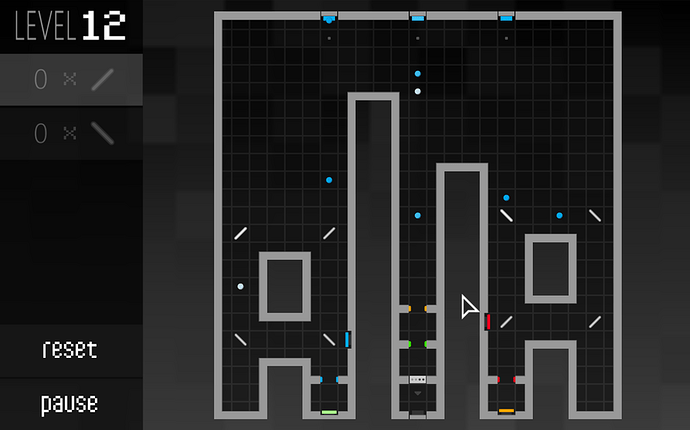Hidden Folks
Hidden Folks is basically a monochromatic Where’s Waldo, except instead of looking for one guy you are looking for a bunch of people/animals/objects in a sprawling lightly animated image. Just trying to find the right say person out of hundreds of similar looking ones is a crazy ask, but what makes it doable is that each thing you have to find is accompanied by a clue that gives an idea where exactly in the image he should be hanging out or what it is that he is doing. Most of them are visible but some require you to perform a given action in order to appear. Many environmental things react if you click on them (and most have a sound that accompanies this, I believe all of them just made by mouth by someone) and for example you may have open up a tent to find someone inside of it. Fortunately you do not have to find every single thing on a stage to move on.
I kinda respect the game as a well done “find the thing” game, and it looks pretty swell, but I really only found it interesting enough to play a stage at a time. If I was a good bit younger it’d probably hold my attention more.
Campfire Cooking
Campfire Cooking is a puzzle game that is 100% inspired by Stephen’s Sausage Roll and yet still has an identity of its own. Like in SSR your job is to cook both sides of a food product (in this game it is usually marshmallows) but this one is much more of a straight sokoban-type game. There is no changes in elevation and it regularly adds new objects and mechanics you must deal with as opposed to SSR’s “you start being able to do everything, you just have to figure it out”; basically there is a reason SSR got all the attention and praise while this is mostly unknown.
That said this is still a very solidly crafted puzzle game (with one exception I’ll get to). Probably the biggest twist in this game is that you can rotate wooden sticks/skewers 90 degrees at a time as long as it doesn’t land any food stuff off the grid and nothing is blocking you from doing so. The other big mechanical aspect is that you have to account for the sticks when moving around as those are what you actually control. In the above image you can rotate the wooden stick to the right but not to the left, as while the single marshmallow will stay in the same spot regardless if you try to rotate to the left you will bump against the metal stick which is a no go. This means many puzzles are about having to move the sticks around each other so that you an cook every bit of food (and with marshmallows you must make sure to not cook any side twice as that will burn it), such as in the above image where you will at some point need to get the metal stick to the right of the other one.
Upon this base a new mechanic is added almost every set of fifteen stages. Little pots of food must stay on a fire square at the end to remain cooking. You have squares you have to light yourself, or fires you must put out (and then likely re-light at some later point). Magnets can be attached to sticks and drag the metal pots around, at which point the sticks no longer rotate. Oh yeah, the sticks usually rotate when you move them (how else would you cook both sides of a marshmallow) which means the magnets also rotate when not dragging anything, although there is a way to push a stick with another one so that it slides over a row without rolling. This is why I feel bad describing it as a more basic take on SSR (even though it is) as it has all this stuff in play (plus more I didn’t get into), it introduces them at a steady pace that lets you learn each new bit and get used to it before adding something else before too long, the puzzles are generally rather well designed, you can skip a couple here and there so you never get truly stuck and perhaps most importantly it does have an identity all its own despite clearly being derivative. For the most part it is everything one would want out of a puzzle game…
…Except for the controls. I do not know how one screws up the controls for a game about pushing things around a grid but they somehow found a way. You move the sticks by clicking on them with the mouse and maneuvering them (I believe right click is normal movement, left click is to rotate sticks when possible) and the amount of times the sticks ended up moving too far or in other unintended ways was more than significant, it was a frequent issue. Even when it didn’t push something somewhere I didn’t intend or burn a marshmallow it was still more of a pain than I can recall any grid-based puzzler being, it may legitimately being one of the worse controlling 2d puzzles games I have ever played. Fortunately the game lets you take back an infinite number of moves so you can always undo these screw-ups (plus the ones that are actually your own fault) but it is a legitimate big mark against the game.
That said… I still found the game to be worth that headache. If I had to make a list of the best puzzlers this wouldn’t end up on it, but it is a really clever second tier puzzle game that had a ton of thought put into it with a good variety of puzzles. I’ve played a bunch of puzzles games that mostly go through the motions (just finished up Sokoban Land DX from the bundle a couple days back and it is 100% this), in this one it is clear just how much effort went into it and I appreciate it.
































